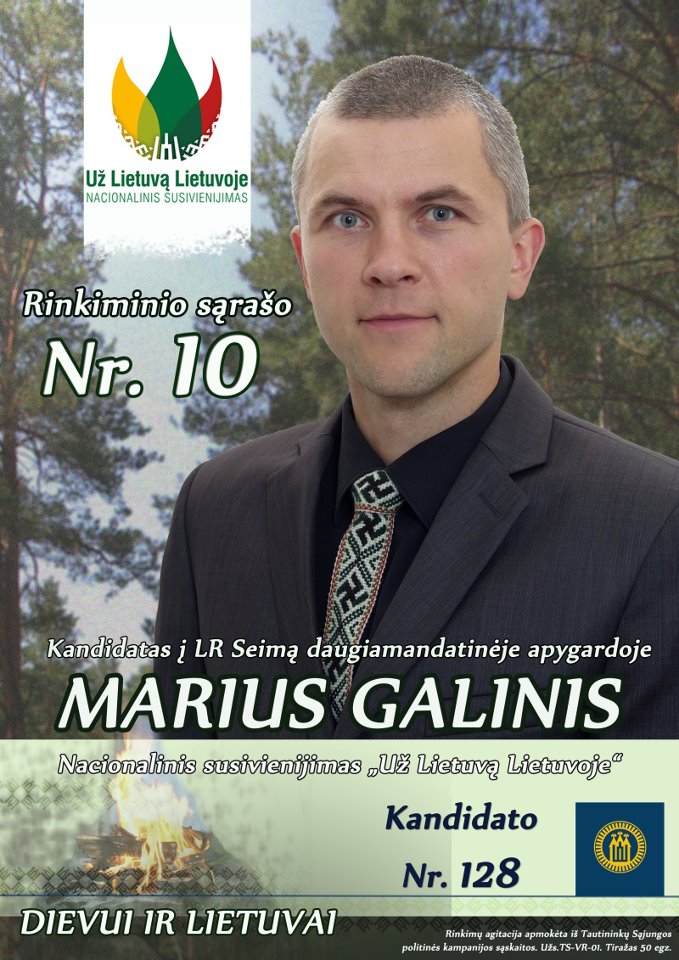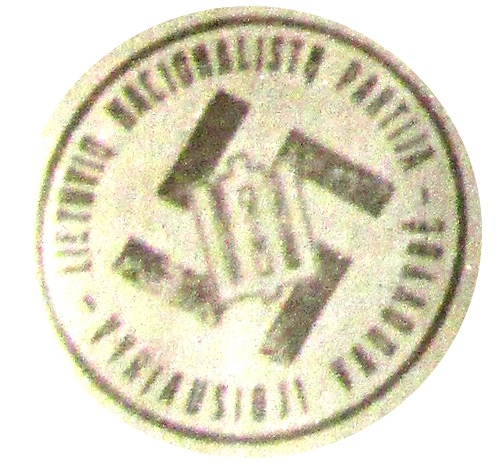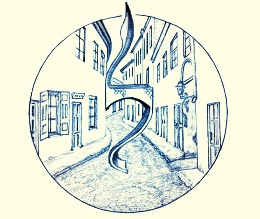OPINION | VILNIUS JEWISH LIFE | LITVAK AFFAIRS | IDENTITY THEFT OF LITVAK HERITAGE | YIDDISH AFFAIRS | SYMBOLOGY
◊
by Dovid Katz
◊
One does not have to be a theoretical champion of Free Enterprise vs. Government Intervention to take stock of this week’s incredible contrast between the two major products of this last week in September, the annual week of intensive Jewish commemoration activity in Lithuania, and particularly, in its fabled capital, Vilnius. By “products” we mean things of substantive physicality that will outlive by far the week’s posturing, speeches, and meetings with glittering public officials and national leaders.
On the private initiative side, a full cinema theater at the Ozas Center in Vilnius was packed with people from all backgrounds, on Sunday evening the 24th of September, people who came to watch Tzvi Kritzer’s new documentary film, Last Sunday in August, on the Holocaust in his father’s town, Malát (today’s Molėtai, in eastern Lithuania), coming a year after the historic march in the town in 2016. From start to finish this has been a project of close, trusting and heartfelt cooperation between Lithuanians and Jews who together seek to come together in friendship and with a sense of purpose to seek and to tell the gruesome truth about what happened to Lithuanian Jewry. The film reveals the full story of one of many small towns where all the local Jews were killed by their neighbors, in stark contrast to the “Double Genocide industry’s” ongoing campaigns of obfuscation, sanitization and hapless revisionism. The bravery of the Lithuanian truth tellers manifest in the film is a huge credit to modern, democratic Lithuania.
On the government side, the week has produced a postage stamp, obviously processed with the best of intentions by people far from bona fide Lithuanian Jewish culture, to honor Žydai (“Jews”) featuring the Jewish menorah fused with a Lithuanian nationalist symbol in a mishmash that brings horror to the eyes of every local Jew we have consulted since the design was first presented on 11 May 2017 on the webpage of the official “Jewish Community of Lithuania” (as PDF).
Defending History’s earlier editorial on the proposed “Litvak logo”
One of the community’s most prominent senior members, himself a Holocaust survivor, writing under the pen name of the 19th century Vilna satirist, Motke Chabad, replied within moments on his Russian-language blog (as PDF), which was then reprinted in a Jewish publication in Israel. Next, after numerous requests from Jewish community members, Defending History replied in an opinion piece, on 12 May. On 19 May, a personal attack on this journal’s editor, with doctored photos and much libelous invective similar to that on neo-Nazi websites was published on the LJC website, which is lavishly financed by the misnamed “Good Will Foundation.” In a revolving circle of “information sharing” the article’s “wisdom” was duly picked up by the neo-Nazi media, and some death threats received. The article’s author? Listed as “LJC Staff”…. This was, in turn, followed by this journal’s reply, dealing with community officials’ private assertions that they had nothing to do with the article, and that it was, according to them penned by a weird political infiltrator into the Jewish community who specializes in “hit jobs.”
Shortly thereafter came the lowpoint in modern Lithuanian Jewish history, when a similarly styled attack appeared on the the same “Jewish” Community website in effect calling hundreds of Vilnius Jews who had voted for another candidate for community leader “Russian speakers who claim to be Jews,” shamefully and shamelessly adopting one of the worst antisemitic tropes in town, as reported internationally the next day by JTA. The rest, on that score, is history, as are the reactions by such prominent Jewish community figures as Leonas Kaplanas and Prof. Pinchos Fridberg. And then, this LJC post too was picked up as ready-made material for the neo-Nazis in town.
Lost in the kerfuffle was the fate of the ill-advised “new Litvak logo” which the LJC website had announced it wanted to make its official community logo. Given the virtual universal Jewish shock at the suggestion, it seems that the proposal for making the menorah plus nationalist symbol into a new “Litvak” logo was unceremoniously abandoned in short order.
But then it resurfaced this week as the government tribute to Lithuanian Jewry as part of a series of postage stamps dedicated to the peoples of Lithuania. The government meant well and means well, but this is what happens when a tiny group of nationalists wants to hijack a weak and decimated minority for PR purposes and without consulting the actual living community concerned. The original proposal, on a supposedly Jewish community website made the unctuous and sycophantic purpose quite explicit: “Bearing in mind the number of descendants of Litvaks around the world, understanding how broadly spread around the world the Litvak diaspora is and knowing the influence Jews from Lithuania have in the world, one could only dream of such a unique success and coup in public relations, and for free, as this logo could bring about, this logo which the Lithuanian Jewish Community wants to possess.” Yes, it really says that.
And now, the LJC website has flaunted without critical comment the new postage stamp:

Source: LJC website at: https://www.lzb.lt/2017/09/24/lietuvos-pastas-isleido-i-apyvarta-pasto-zenkla-litvaku-kulturai-atminti/
There is absolutely nothing wrong with the national Lithuanian symbol per se that is embedded in the menorah. But it is not remotely a Jewish symbol, never was and never will be, and what is offensive is that in recent years, the groups who have chosen this particular symbol for their current work have virtually all been ultranationalist or neo-Nazi groups who hate Jews and other minorities with a venom. It is at the center of the logo of the far-right organization that sponsored a demonstration defaming 95 year old Holocaust survivor (and anti-Nazi partisan hero) Fania Yocheles Brantsovsky earlier in 2017.
It is a logo over which women’s rights campaigners have been prosecuted in recent years (at the whim of far-right groups) for “desecrating.”
It is one which a far right political candidate very recently used on his poster right along with swastikas.
◊
And, back in 1941, as the Holocaust was initiated in Lithuania, resulting in the murder of around 96.4% of Lithuanian Jewry, the genocidal “Lithuanian Nationalist Party” used this symbol superimposed on a swastika.
◊
Symbology, studied at a point in time in any society, is about the societal meanings that inanimate forms have for whatever reason taken on and further evolved over time, not about their original status, nor about what “should have been” the linear history given the symbol’s original intent. It so happens that Lithuania’s primary national symbol, its coat of arms or the Vytis, comprising an armor-clad medieval Grand Duchy of Lithuania knight on horseback, holding a sword and shield, while also not by any means a Litvak symbol (it even has a cross and could not be a Litvak symbol), is one that nevertheless evokes in collective Litvak memory and folklore feelings of warmth, and a spirit of tolerance and freedom for all, and pride in the Grand Duchy of Lithuania heritage. It conjures the magnificent generosity of spirit extended to Jews and other minorities by the Grand Duchy.
It is a classic case of a minority group admiring a national symbol they feel includes them too. If, however, someone were to crush the Jewish menorah even into this one in a bogus combo, that effort too would fail, being unfair both to the national symbol and that of the minority. Mutual respect and happy coexistence do not entail graphic surrender of any to another. The base of the menorah is not “a shop-window display stand” or “candlestick” for any “higher” state symbol, not in Lithuania, America, or Israel. Not anywhere, period.
◊
The newly released postage stamp, instead of using Yiddish, the language of Lithuanian Jewry, has only modern Israeli Hebrew text including the word meaning Litvaks. Since the Jewish community’s reestablishment with the rise of modern Lithuanian democracy, all its Litvak conferences and events have without exception used the Yiddish word Lítvakes (ליטוואַקעס). For some strange reason (antipathy to Yiddish of the current Israeli ambassador?), even this Yiddish word is Hebraicized to Litvakim (ליטווקים), which happens to have a very different connotation in modern Israeli Hebrew. It is used to refer to a certain rather specific religious type in modern Israel: Haredi (ultra-Orthodox), anti-Hasidic, usually anti-Zionist, Ashkenazic (speaking Israeli Hebrew, and little or no Yiddish, but praying in East European Ashkenazic pronunciation) in most cases with absolutely zero connection to actual Lithuanian Jewish heritage. So insult is added to injury, inaccuracy to usurpation, and inappropriateness heaped on top of the inappropriateness of the mishmash ersatz symbol. Earlier in 2017 the Israeli foreign ministry partnered in production of a truly beautiful Lithuanian postage stamp celebrating 25 years of Lithuanian-Israeli friendship with equal respect to both sides and disrespect for none. Would it hurt Israeli foreign policy for there to be, as a separate issue, some respect for the Jews of Lithuania, past and present, their 700 year old unique culture, history and language?

From the days of a proud, independent Lithuanian Jewish Community leadership that loved the country’s Jewish people and honored their grand Jewish heritage, including the Yiddish language. From the 2013 program of the Fourth International Litvak Congress in Vilnius.
It is high time for the Lithuanian government to understand that the usurpers of the official Jewish community and its state-sponsored restitution, now allegedly in office illegally after rigged elections, who want to be more nationalist than the nationalists, do not speak for the murdered Jews of Lithuania, for past generations or for today’s small but spiritually resilient community. Indeed, the Vilnius Jewish Community, led by 21 democratically elected council members, and representing thousands of Vilnius Jews constituting the overwhelming majority of Lithuanian Jews today, was not even consulted. If ever sociologists, political scientists and other scholars will want to study attempts to hijack the name of a nearly annihilated people for PR, combining a traditional national symbol with one that is now often abused by extreme right-wingers, this will be their prime example.
This Fake Litvak symbol has no legitimacy. It never will. It can’t hurt to try on one of the many real ones just for size…





